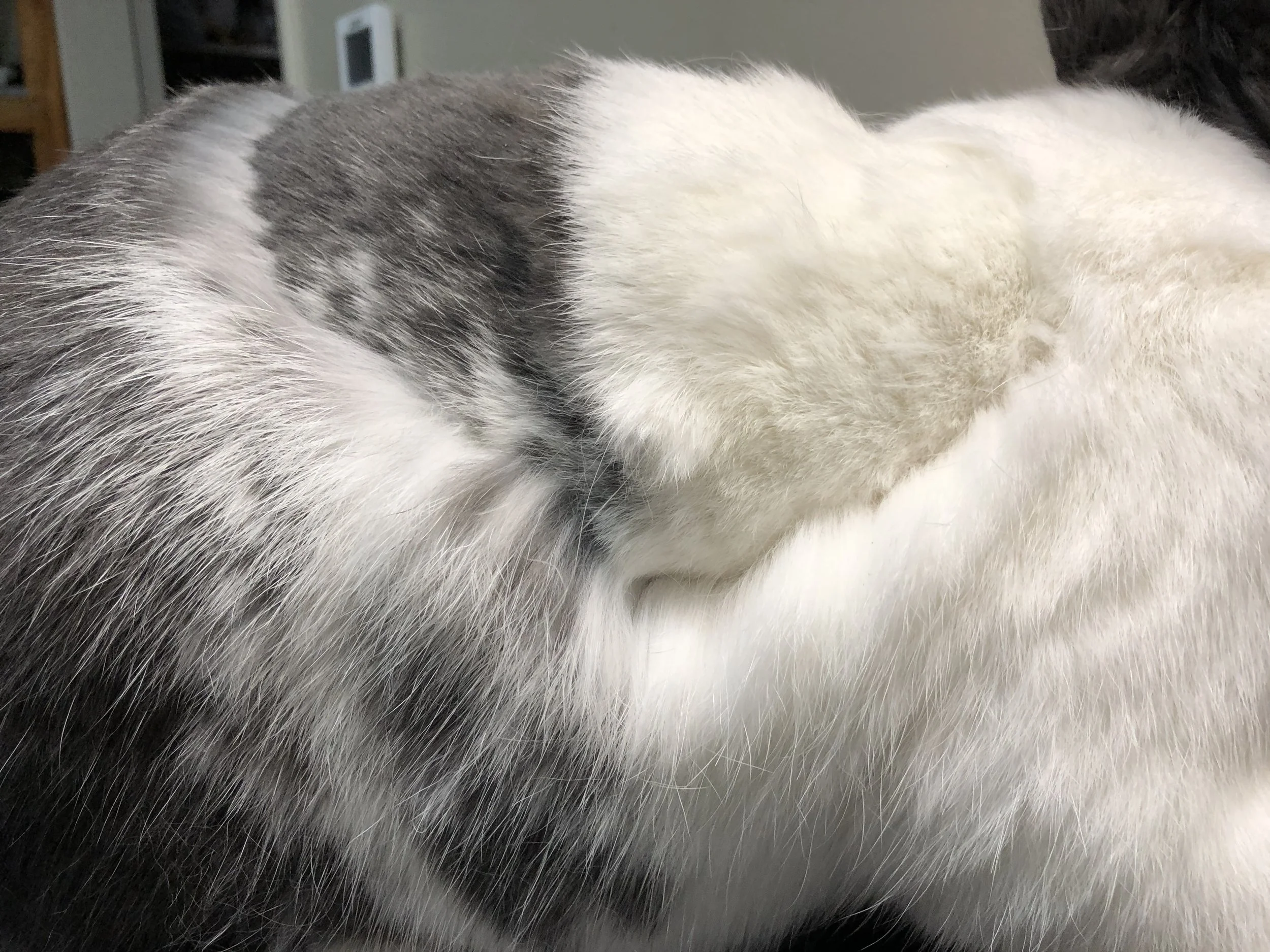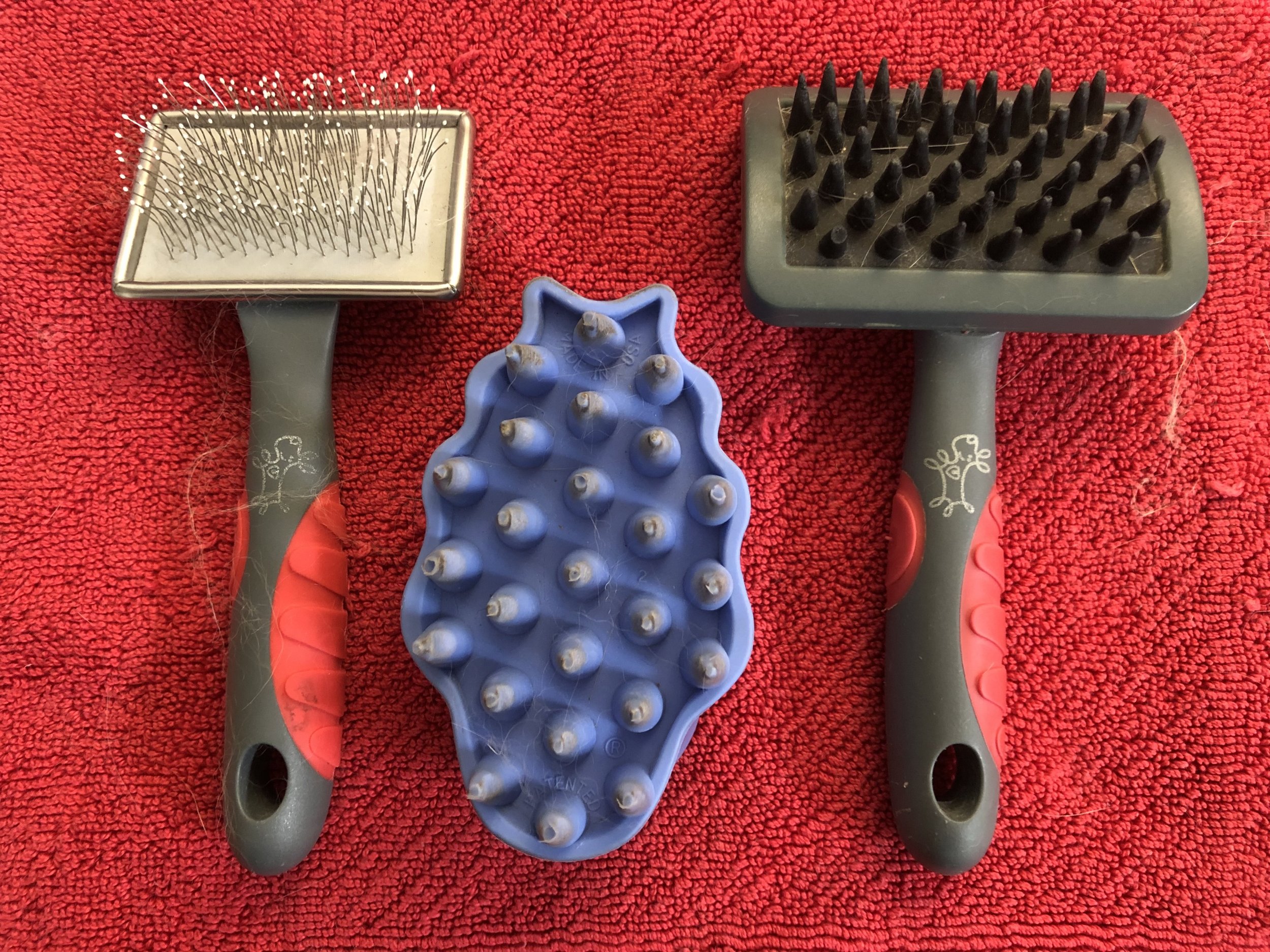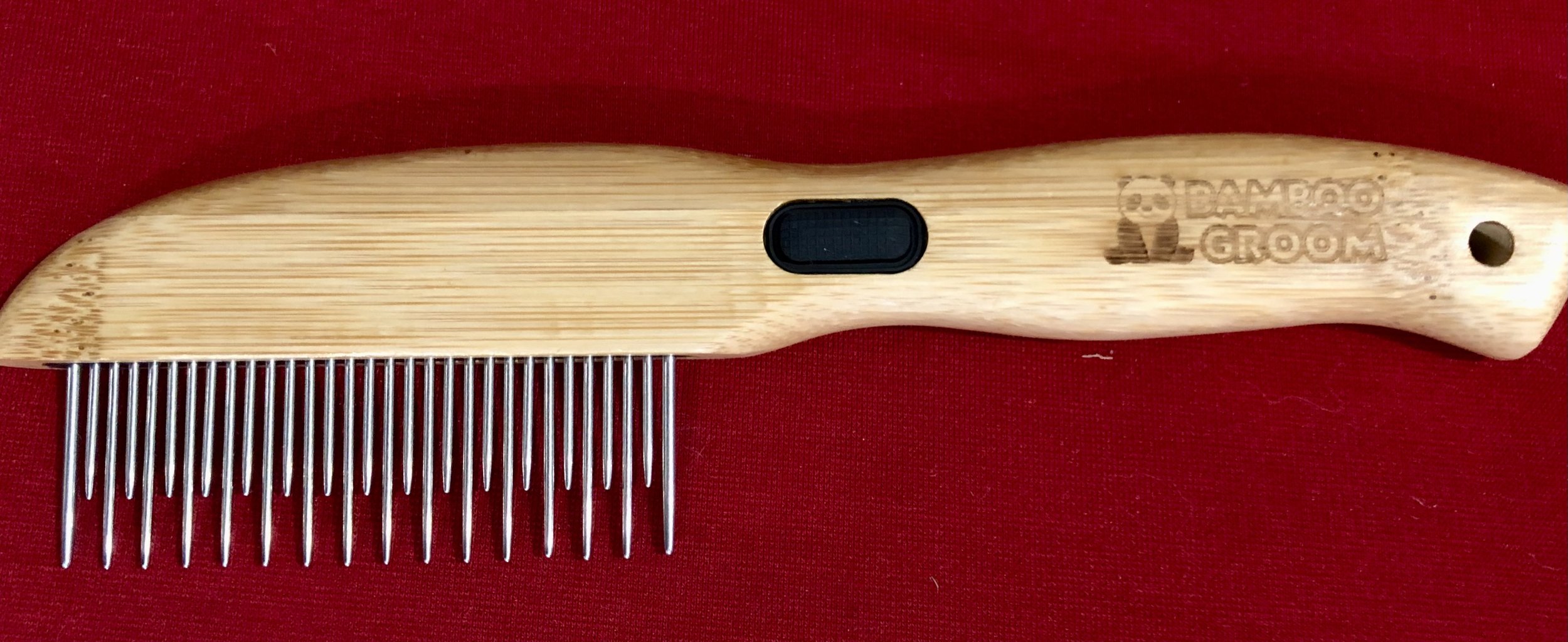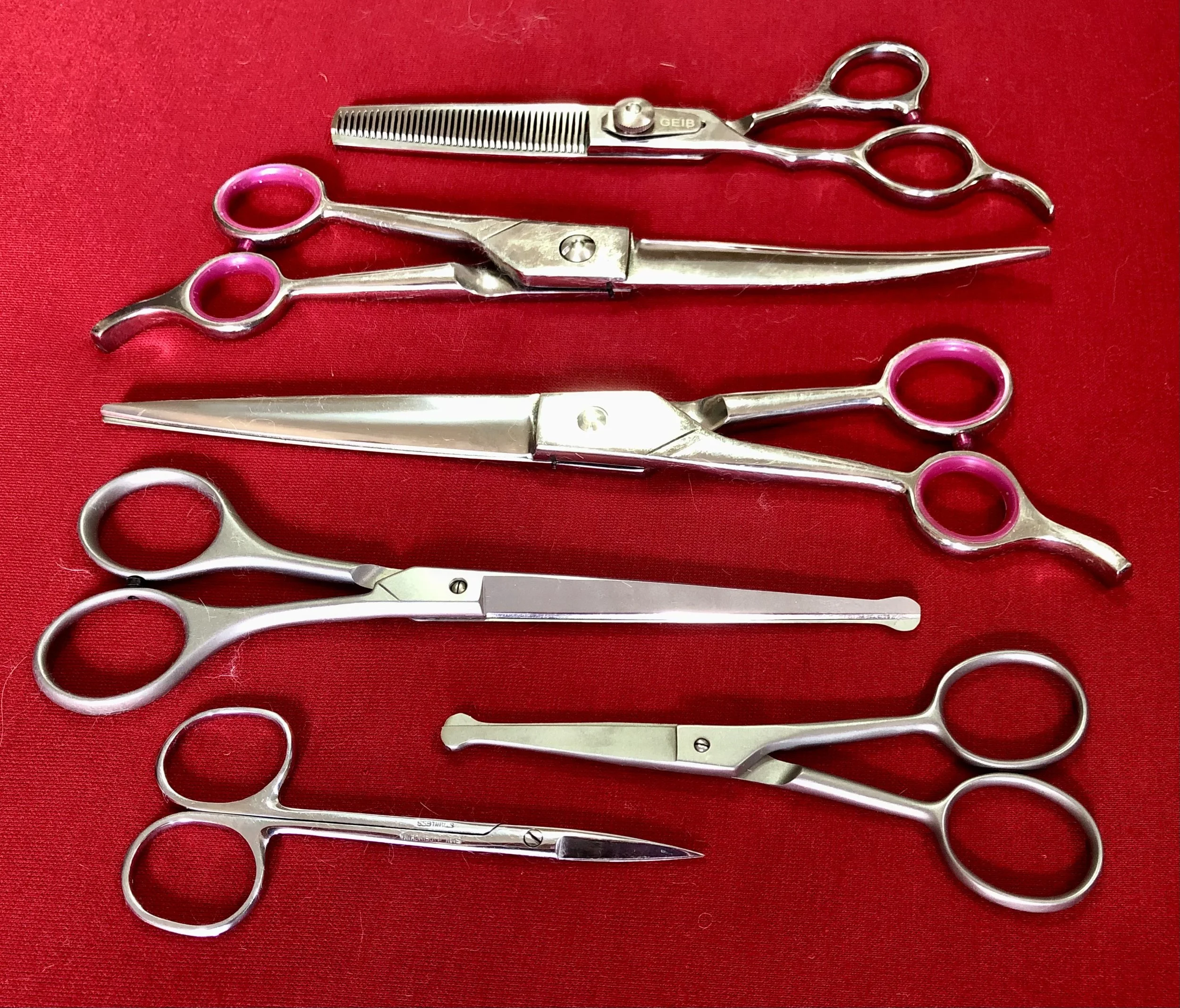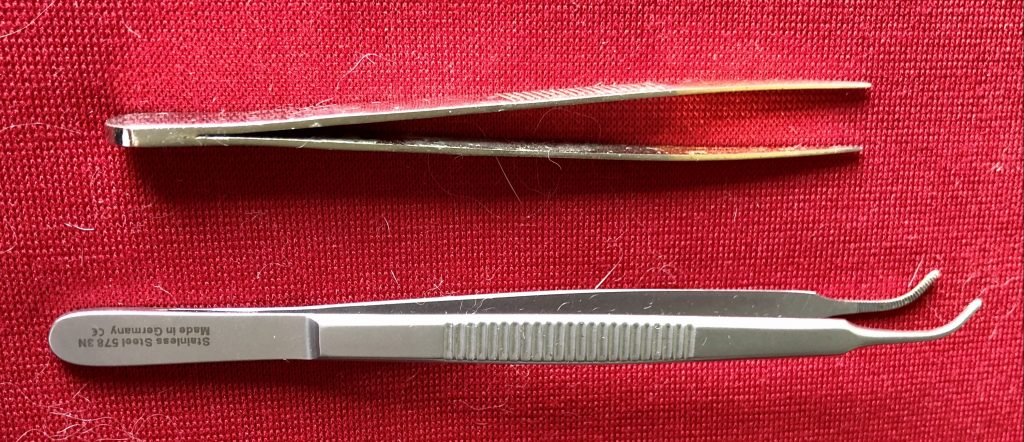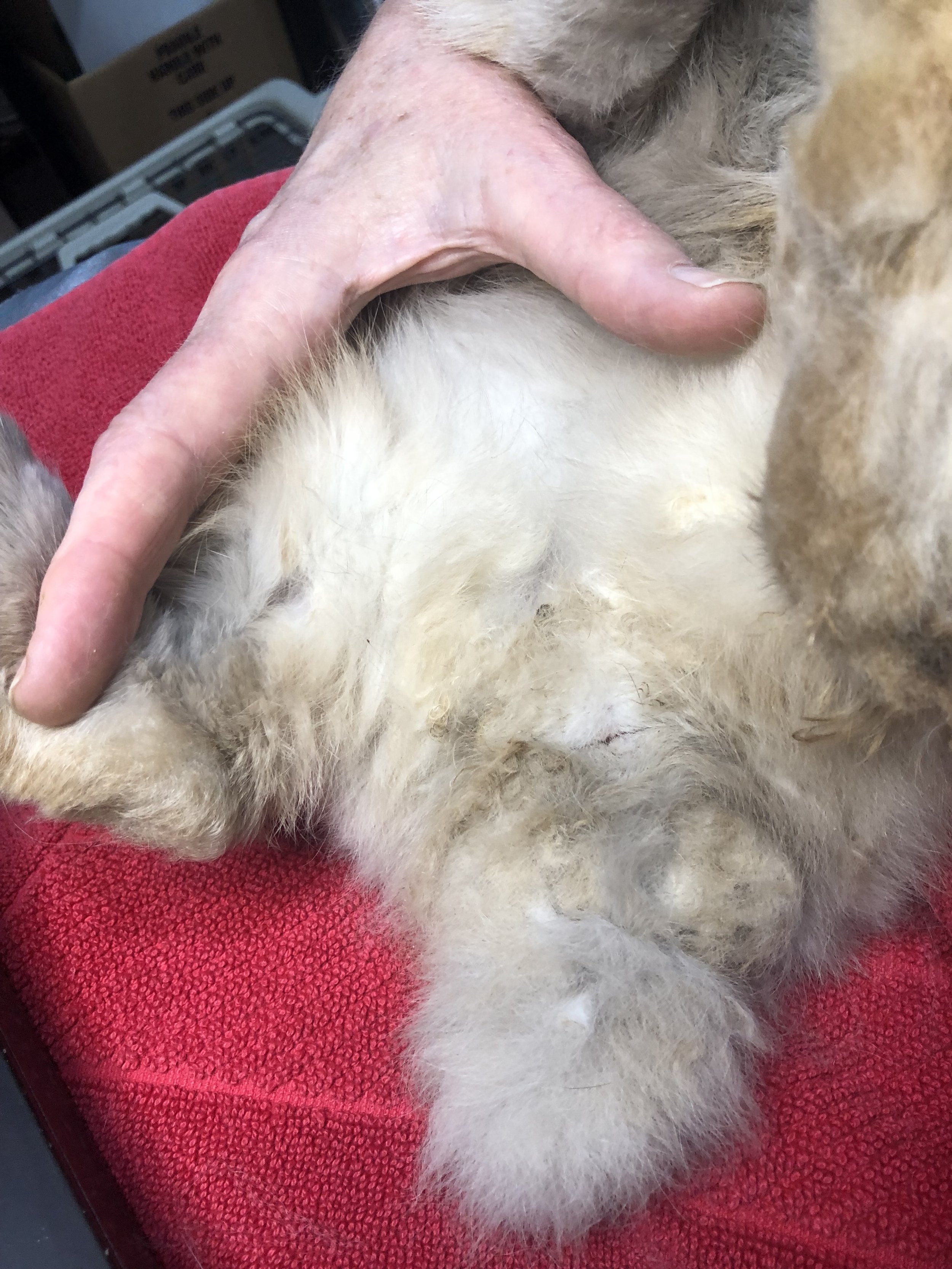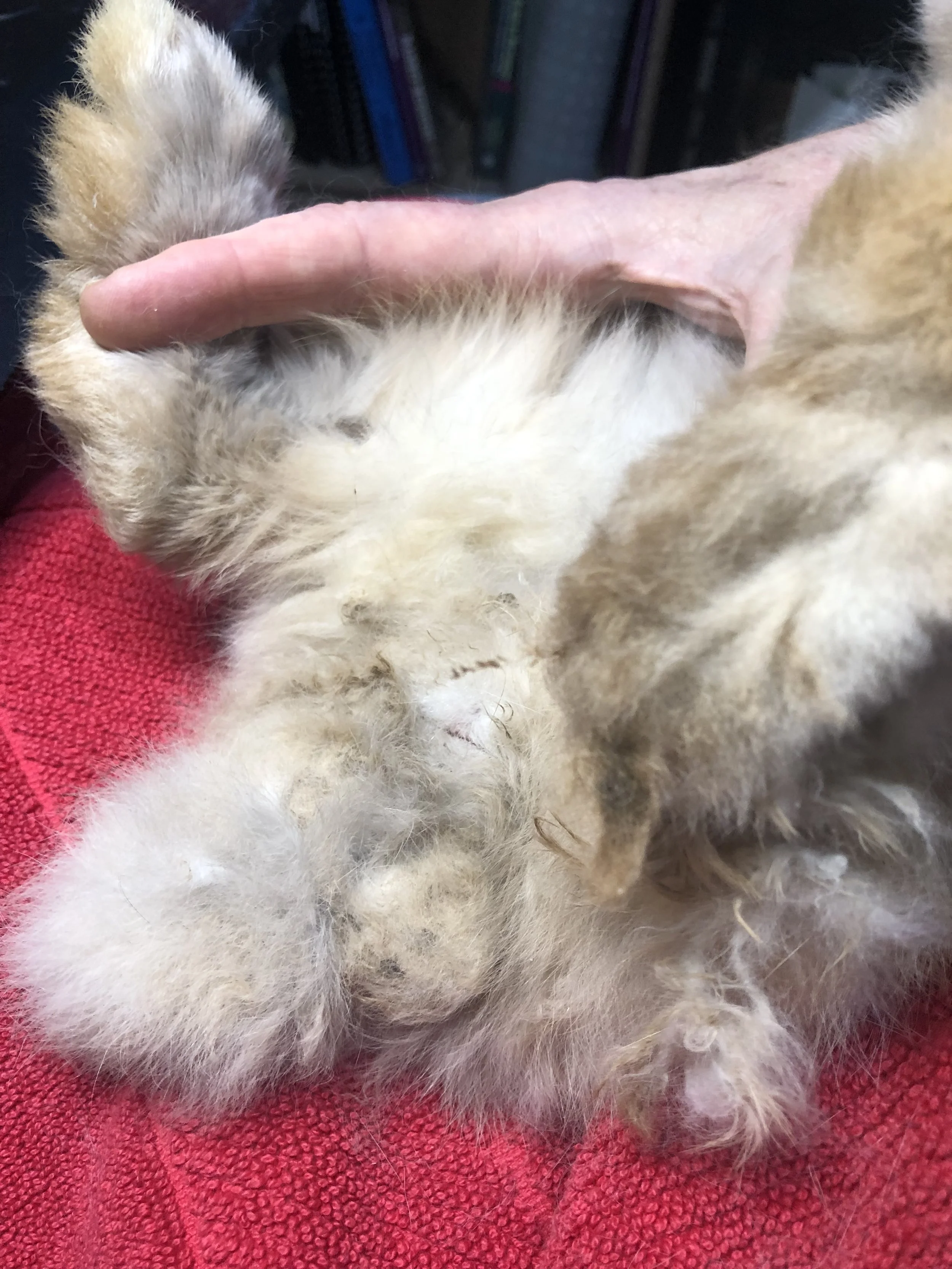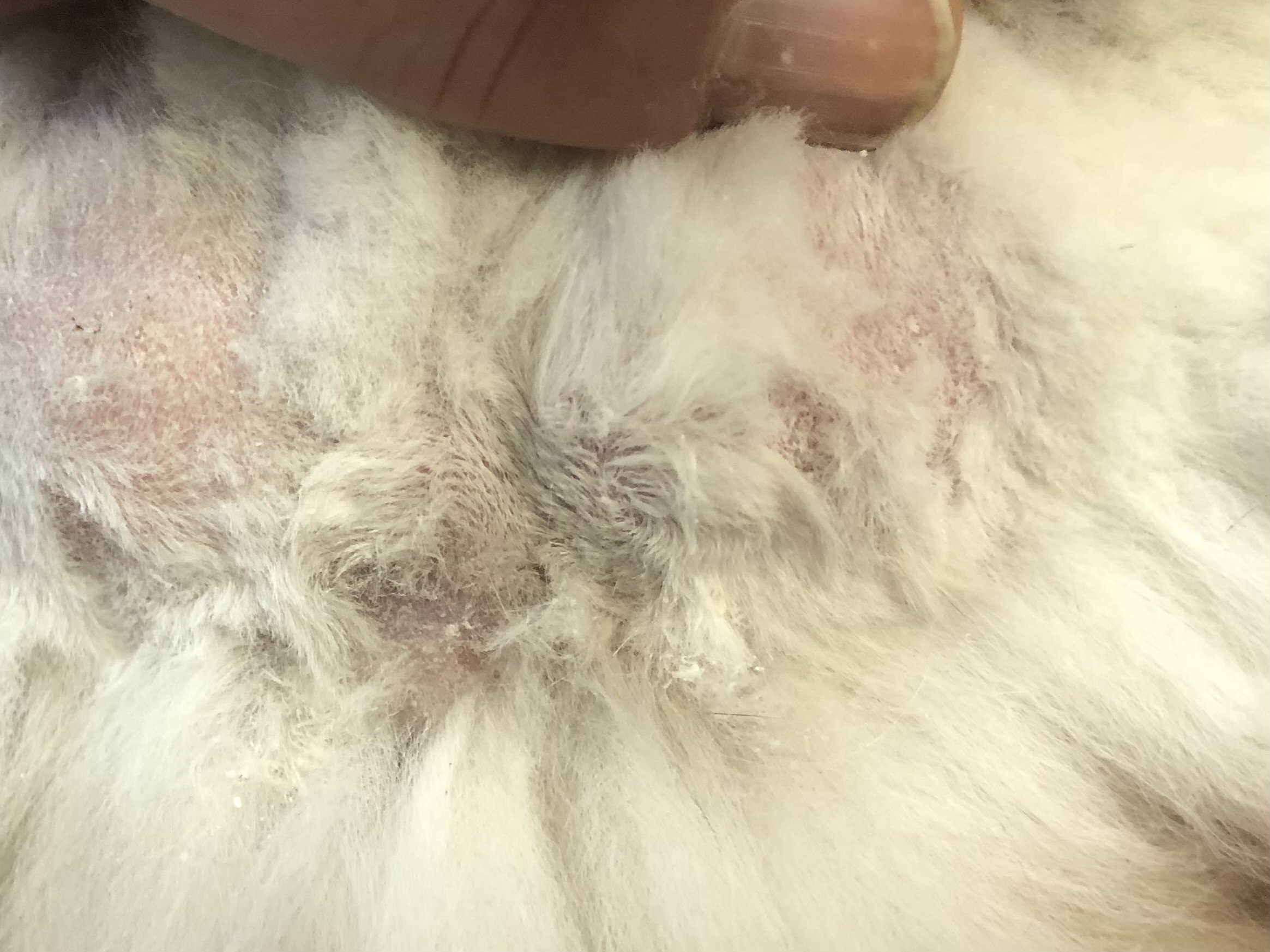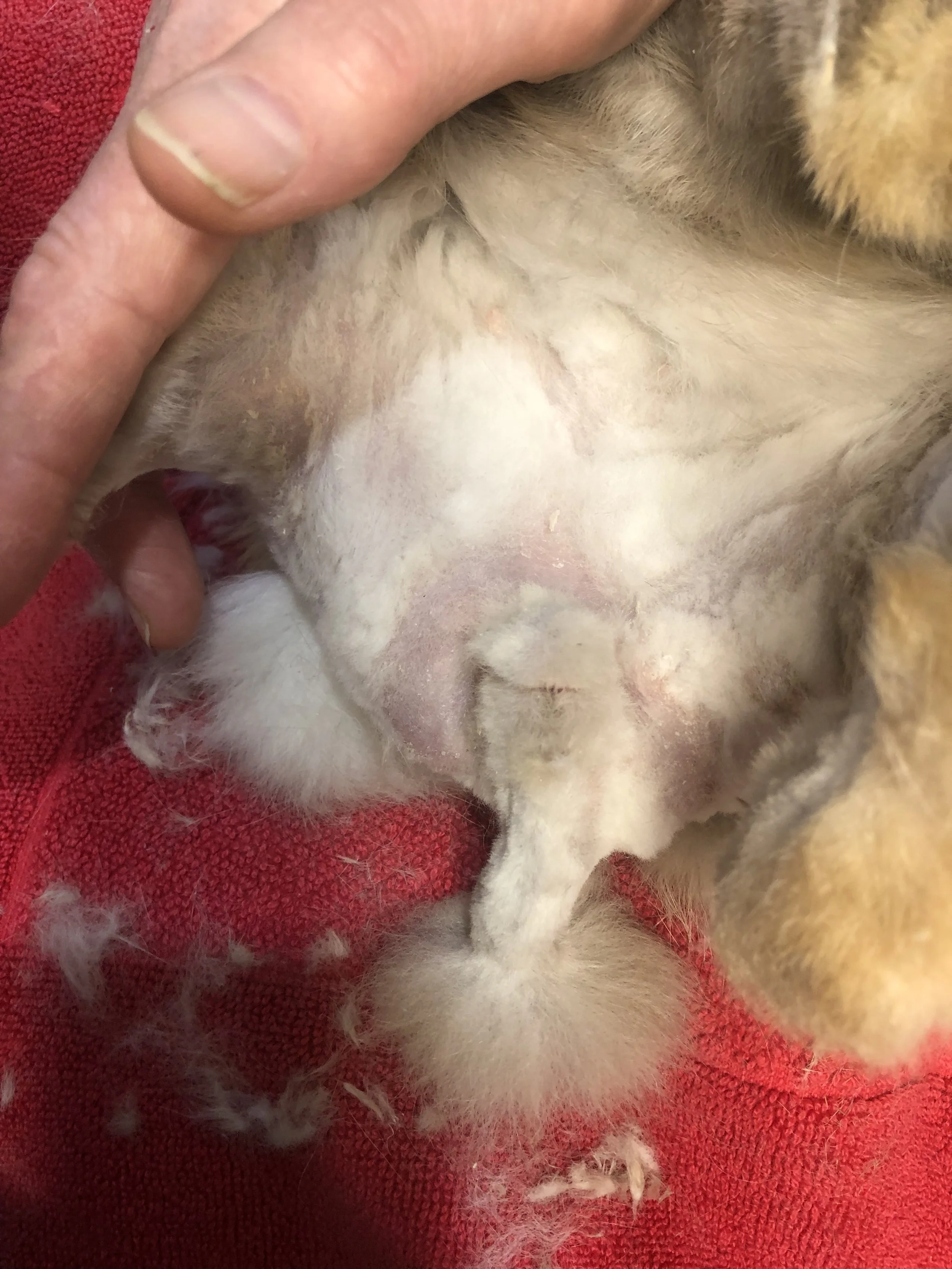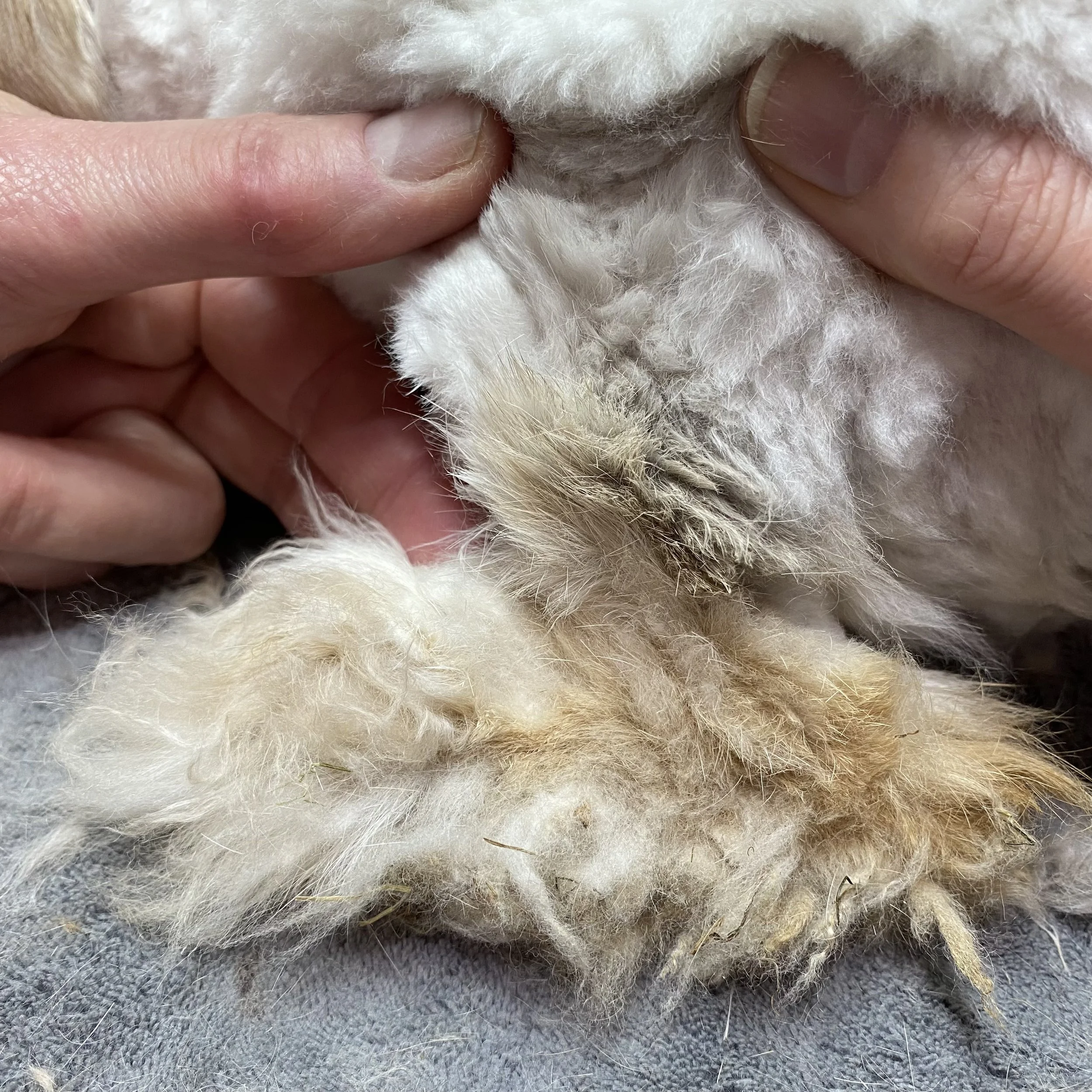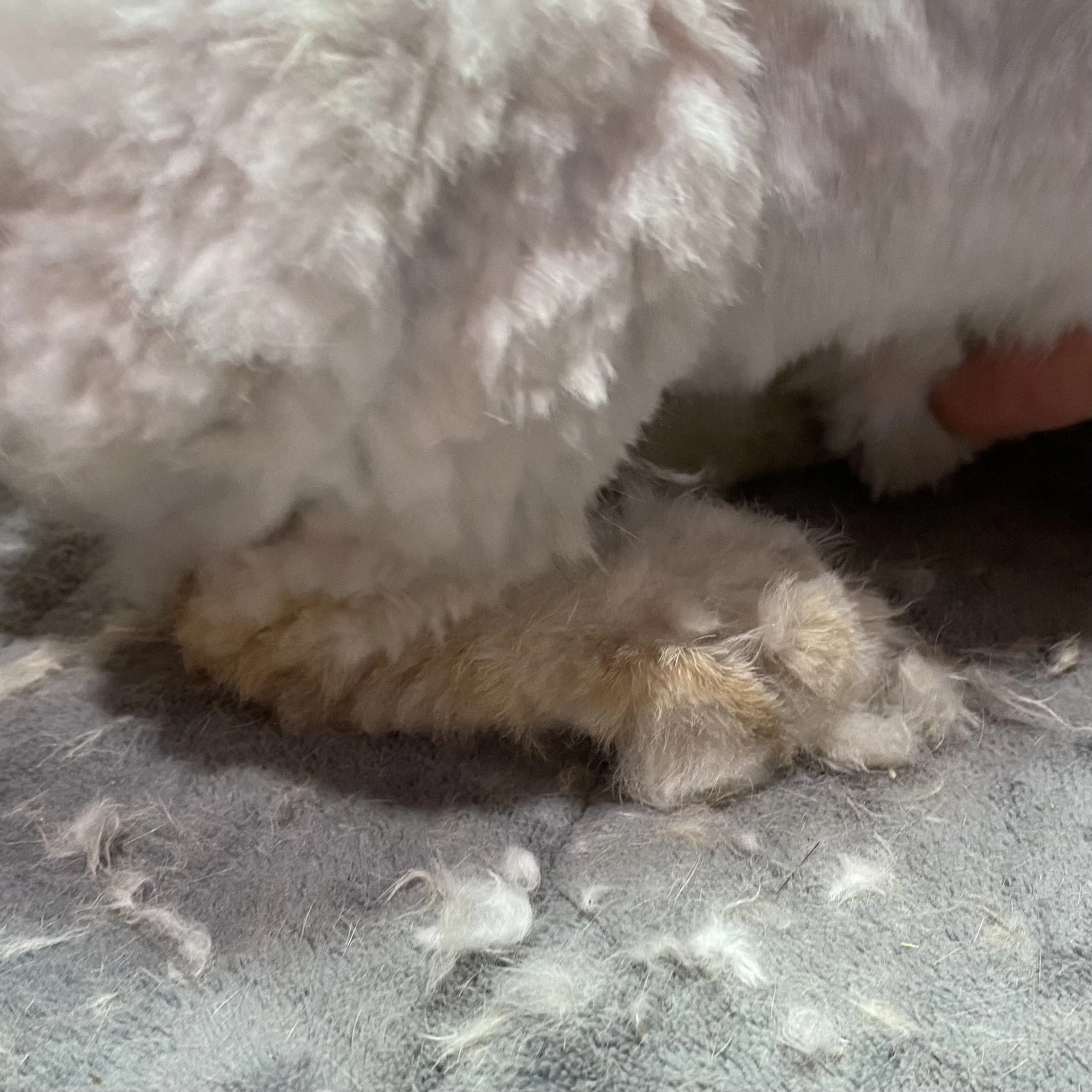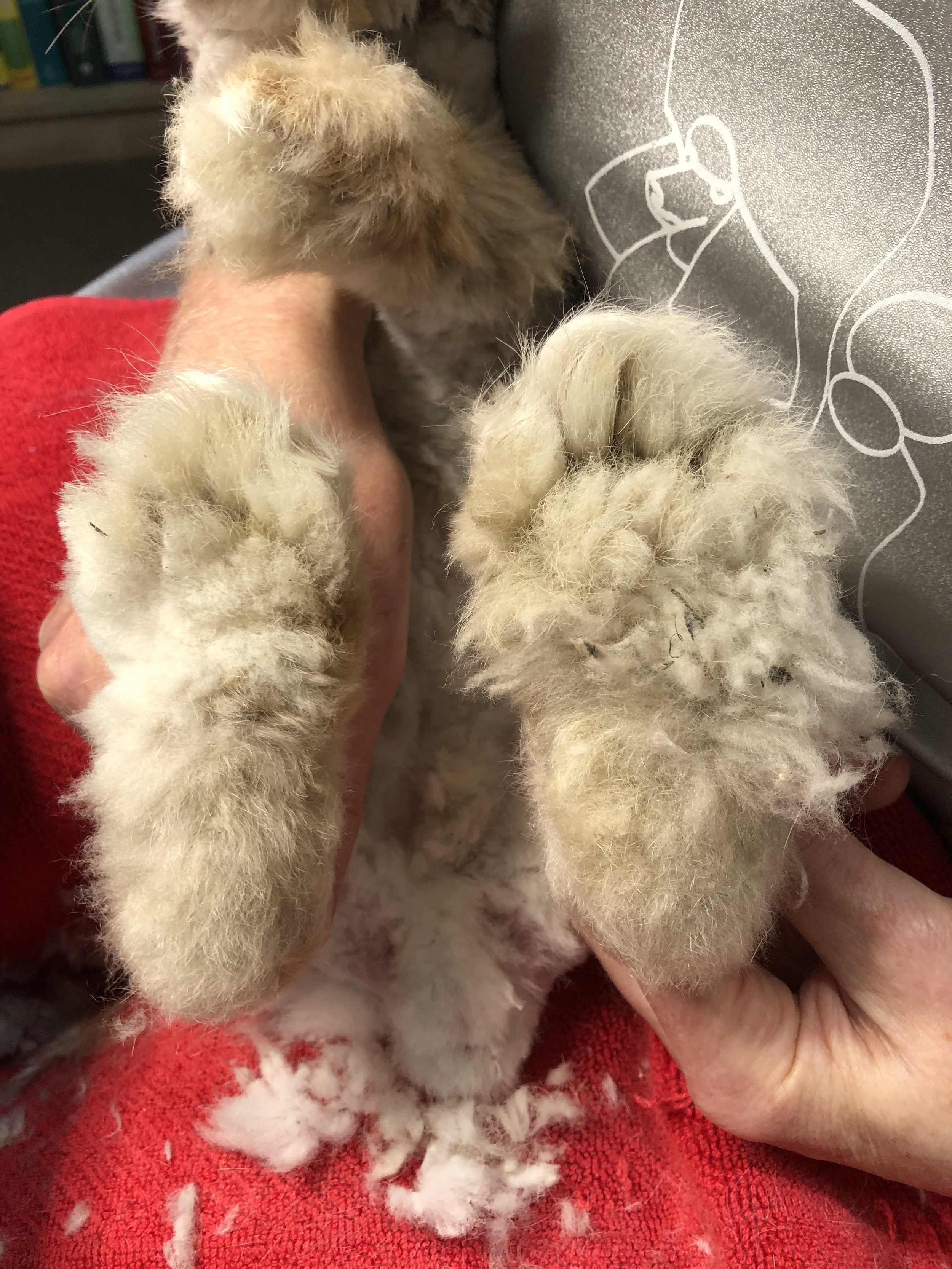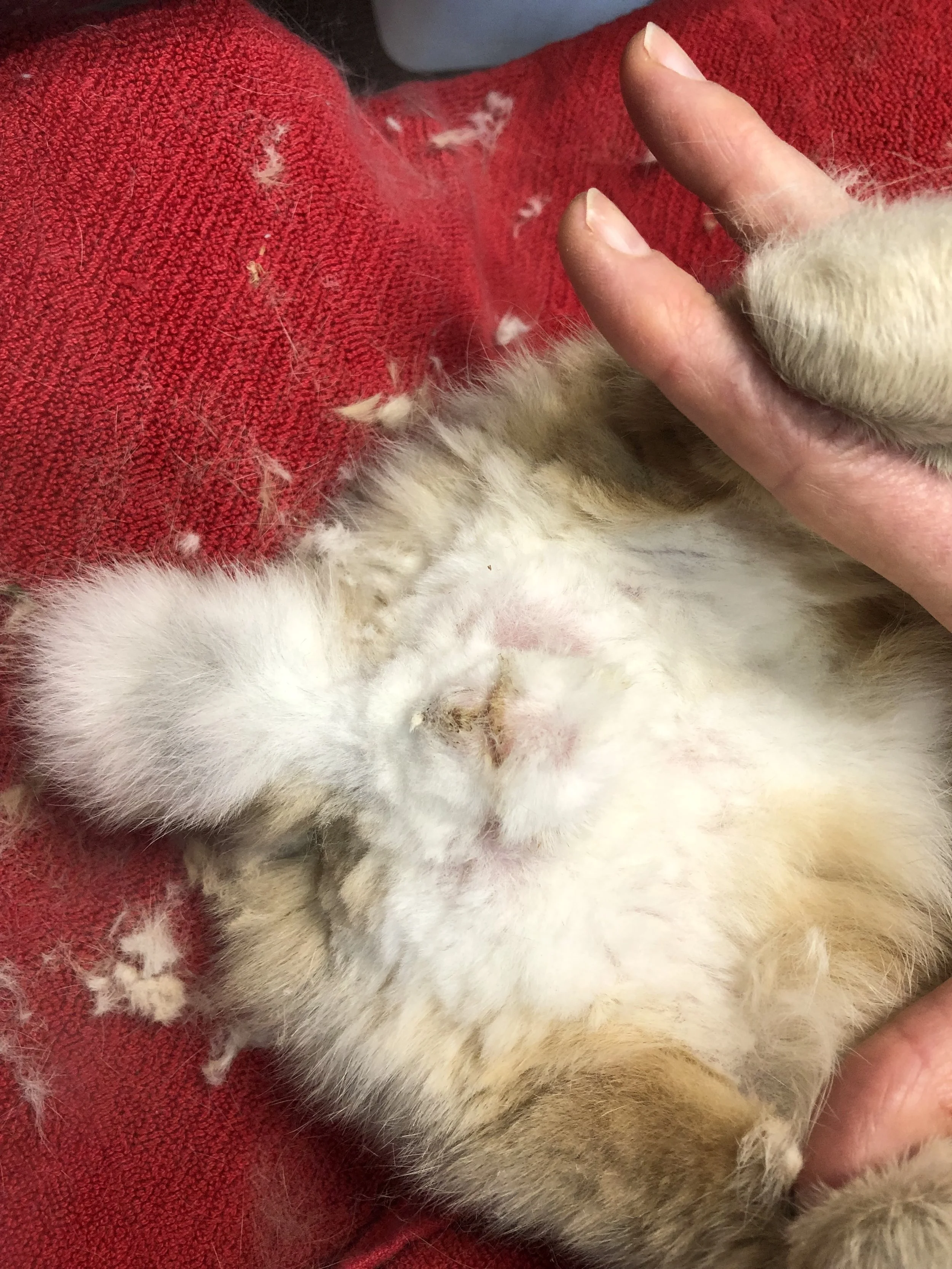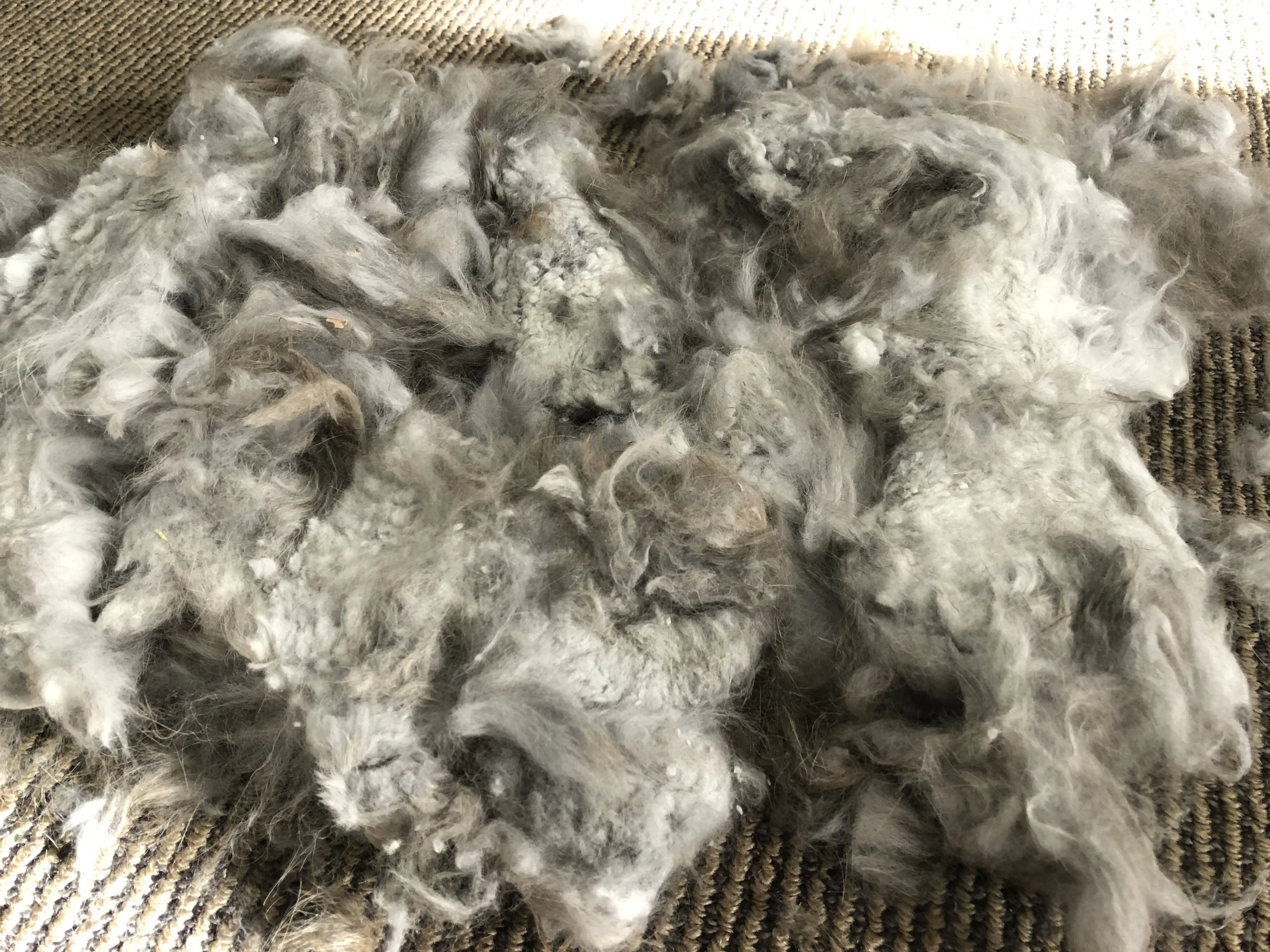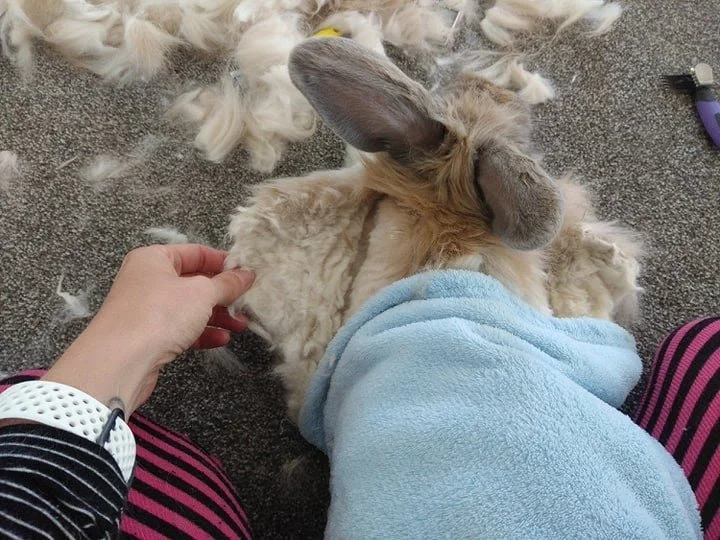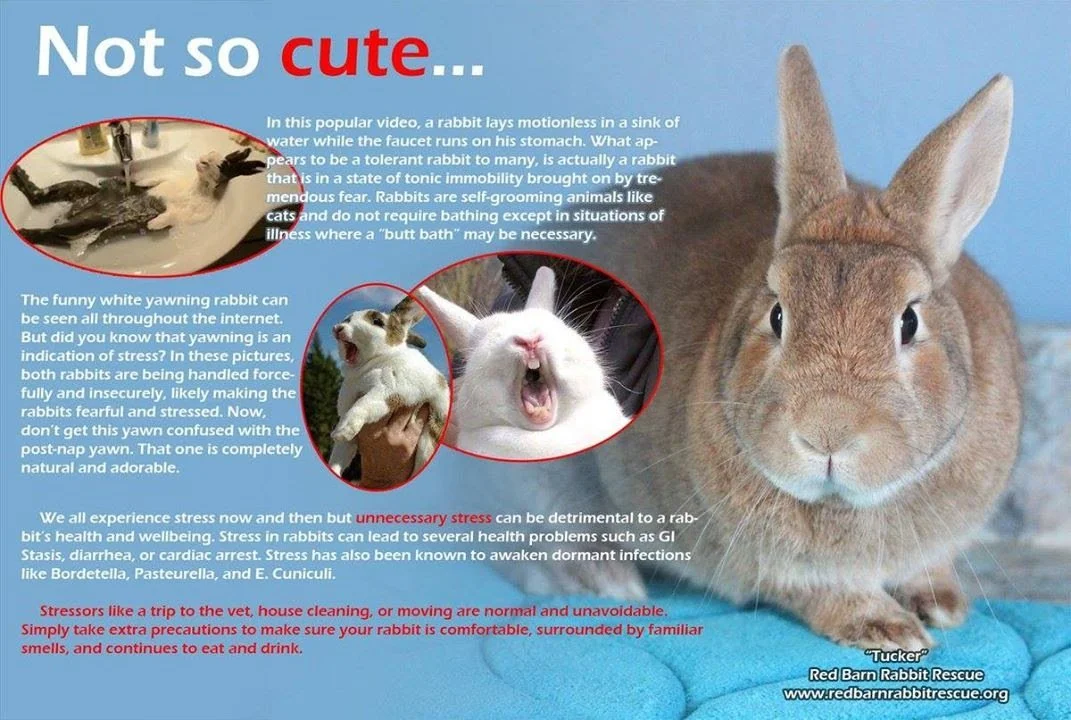Grooming
You can view my grooming videos for both long coated and short coated rabbits at Westley’s World’s YouTube channel.
How to hold your rabbit for grooming
It’s important to hold your rabbit correctly when grooming him. After all, the whole experience is supposed to be enjoyable for all concerned, not an ordeal that both parties dread!
***Do not lay your rabbit on its back***
Although your bunny will undoubtedly stay perfectly still, this is not because he is relaxed or hypnotised. This reaction is an instinctive prey animal response to being caught by a predator and is called Tonic Immobility. A tranced rabbit is actually terrified and playing dead. Any noises he makes will be of fear not pleasure. You can read more about TI here - Trancing/Tonic Immobility.
Instead make your bunny comfortable by placing him on a blanket or towel on a firm surface or on your lap, so that he feels secure and comfortable.
See here - Safe Handling for more in depth info on handling.
This video has some VERY good handling techniques that are especially useful for grooming
Why Grooming Your Rabbit is Important
When rabbits groom themselves they tend to swallow a lot of fur, especially when they are moulting. As rabbits cannot vomit, this ingested fur can form hairballs in the rabbit’s intestinal tract. When the hairballs dry out, they cause the gut to become sluggish and can lead to stasis or an obstruction.
Grooming your rabbit helps to get rid of excess fur, gives you the chance to bond with your pet, and also allows you to check him over for early signs of any potential health problems, which we’ll discuss later.
How often should you groom your rabbit?
Short-coated breeds of rabbit should be groomed at least once a month but more frequently during shedding. Breeds with long coats should be clipped every 4-6 weeks depending on coat quality and growth rate. These rabbit breeds - Angora, Jersey Woolly, Cashmere Lop, are prone to developing mats if their coats are not managed carefully. The most humane option is to clip them regularly. Brushing is generally not recommended because it can actually cause matting, especially on Angora coats.
Checks to make whilst grooming your rabbit
So, before we get into detail on how to groom your rabbit and talk about the best tools for the job, let’s look briefly at a few important health checks that you should include in your pet’s grooming routine.
Scent Glands
Your rabbit has scent glands on either side of their genitals and beneath the chin. Occasionally, you may notice a foul smell emanating from your pet’s rear end. This unpleasant aroma is caused when the scent glands become impacted. This not only smells bad, it is very uncomfortable for your rabbit and can attract flys leading to fly strike.
The other risk with scent glands is that they can become infected. So checking them regularly is essential.
These scent glands became infected with an associated episode of rain scald.
You can read more about Scent Glands and how to go about cleaning them here - Scent Glands
Feet
Keeping your rabbit’s feet in good condition is extremely important. The skin on the soles of the feet is very tender and easily damaged. Injuries can expose the skin to bacteria from urine-soiled bedding, and infection can occur as a result. In addition, mats can form on the foot pads, especially of long-haired breeds and Lops. If your rabbit has bald, sore-looking patches on his foot pads - sore hocks, or areas of matted hair, a trip to the vet is called for.
There is more info about sore hocks here - Sore Hocks
Never clip all of the fur off the bottom of a rabbit's feet. This leaves them with no protection and is incredibly painful for them. If the bottoms of the feet are matted follow the approach discussed in Matts section below.
Nails
Check your rabbit’s nails weekly to ensure that they do not become overgrown. Nails that are allowed to become overlong can cause toe injuries, gait issues and sore hocks. You can trim your rabbit’s nails yourself, but always use proper pet nail clippers rather than scissors or human nail clippers. If you do not feel confident in clipping your bunny’s nails, ask your vet nurse to do the job for you. Little and often is the best policy! I clip my rabbits’ nails about once a month, when I groom them. This way only a small amount needs to be taken off each time, reducing the risk of mistakenly cutting the quick of the nail.
You can read more here - Claws / Nails and view videos here - Clipping Claws
How to Clip a Rabbit's Claws - WikiHow
Clipping Your Rabbit’s Nails - My House Rabbit
Rabbit Nails - Rabbit Matters
Parasites
Even house rabbits can occasionally pick up fleas or mites. While grooming your rabbit, look out for dandruff (mites), and part the fur to check for dark matter (flea dirt) on the skin. You may even see fleas crawling around on the rabbit’s skin, typically near his head, face, rump and lower belly. Frequent scratching and sore, reddened areas on the skin are usually indicative of parasitic infestation or some other skin condition. You can read more about this here - Mites / Fleas / Lice / Fur Loss / Skin Issues.
Shedding/Moulting
The first thing to note about rabbits is that all breeds shed some of their coats, approximately every three months... and some non stop! The shedding usually alternates between light and heavy, and its duration varies between individuals. Some rabbits take two to three weeks to shed, whereas others can do it all in one day! It’s especially important that you groom your rabbit with a rabbit grooming brush daily when he is shedding, in order to avoid the formation of hairballs/blockages. You can read more here - Moulting
What are the best tools?
Before you groom your rabbit, you’ll need to equip yourself with the right tools for the job. Once you get into the routine of grooming your pet, you will quickly discover their favourite brushes and approach.
Below is the range of tools that I have settled on using - for my own, my rescues and grooming client's rabbits, after years of trial and error -
Electric Clippers
You can read about my recommendations in detail here - Clippers
Brushes - these are the most effective options.
Left to right - Yours Droolly Puppy Slicker Brush, Zoom Groom, Shear Magic Moulting Brush For Small Dogs
The Shear Magic Moulting Brush For small dogs is a winner. This has rubber teeth and is really gentle. It massages as you brush whilst removing loose fur and every single rabbit I've ever used it on - and that's a LOT of rabbits, has absolutely loved it. The tines do not dig into the rabbit’s skin at all.
Yours Droolly Puppy Slicker Brush - has a rubber head mounted with tines which are made of thin wires. If you choose to use one like this make sure it is puppy sized. Do not use the larger version - the head is too wide and causes too much drag on the coat. It is also essential that the pins/tines that have plastic or rubber end guards/caps to avoid scratching or ripping your rabbit’s skin. Never use a slicker that has unprotected tines.
Both of these brushes can be used on short and medium-coated rabbits, and are good at removing the loose undercoat - but please use the metal tines brush extremely carefully to avoid scratching or tearing the skin.
Zoom Groom - The ultimate in gentleness the Kong Zoom Groom Flexible Rubber Cat or Small Dog Groomer is really good for sensitive buns and those that detest brushing. They are most effective on short coated rabbits and are great for general brushing and stripping out fur during the moult.
Nail Clippers
I prefer to use small dog clippers like these - Shear Magic Nail Clipper For Small To Medium Dogs for my rabbit’s claws.
Combs
I've tried all sorts of combs but find many simply skim through the fur without removing any fur. These are the ones that I feel work best.
The Hair Buster Comb is the gold standard of combs for grooming rabbits.
Gently gripping loose fur to remove it, it is a real asset in your kit. This terrific comb is available in NZ through the One Stop Bunny Shop
The Glamour Puss Moulting Comb
This is effective as well. Used gently on a 45 degree angle it effectively removes the moulting undercoat.
A Rotating Pin Comb
This is another option that is worth considering. Rotating pin combs are effective in removing the undercoat. However, because the pins rotate, they do not pull on the fur as much so are therefore more gentle.
Scissors
I use a range of scissors. Because I do so much grooming I have invested in professional grooming scissors which are very effective and efficient to use.
Some of my Scissor Collection!
If using scissors, you MUST be very careful, work slowly and extremely carefully so as not to snip your rabbit’s skin. Keep the flat blades of the scissors rotated at 45 degrees - vs having the flat of the blade parallel to the skin, to help avoid cutting the skin. Until you are more confident, you can also keep you fingers between your scissors and the skin or use a comb instead so that the skin is protected at all times.
The scissors that I use frequently in conjunction with my clippers are; Witte Roseline Straight Safety Ball scissors (esp the 4.5”) and more recently I invested in a set of Geib Gator Left Handed Scissors; including a curved scissor. I also have a few pairs of very fine and sharp cuticle scissors.
These are available from All Groom Scissors.
Tweezers
I use these fine tip splinter tweezers as well as fine grip tip forceps to gently tease out and loosen matts a few strands at a time.
Often the matts need their tops of them cut off VERY carefully - making sure to keep away from the skin, first.
And … so to Grooming
Short Coated Breeds
Follow this general approach - start by using a slicker brush to draw any loose hair from the rabbit’s coat. Brush the fur in the right direction so that it lays flat. You can also lift a section of fur and brush it out in sections.
Use a Zoom Groom to gently remove the excess fur. Use a stroking motion from behind the rabbit’s ears, along his back to his tail. Repeat the process a few times, taking in the rabbit’s sides and tummy too.
If you have a longer/medium coated rabbit, part his fur so that you can check for hay seeds and other irritants that may have worked their way down to the skin, especially around his face, eyes, tail and rump.
Now use your slicker brush or comb to go over bunny’s coat, brushing with the direction of growth. This should get rid of any tangles and stubborn loose hair.
When in heavy moult, gently plucking can be the most effective way to remove loose fur. Be very gentle - if the fur does not come away easily then it is not ready to come out.
When you groom your short coated rabbit this must include their rump, undercarriage, tail & feet, not just the visible, easy to reach top part of their coat over their back. It is essential to remove shedding fur in order to prevent it backing up and becoming matted. Have a good ‘grope’ of your rabbit’s tail - you should be able to easily feel their tail bone. If it feels ‘padded’ then you need to gently remove the excess fur to prevent the tail becoming matted. Gently plucking is the best way to do this.
Some breeds - especially Lops, have short, stumpy legs. This means their undercarriage is low slung to the ground exposing it to wetness, dirt and friction. If moulting fur is not thoroughly removed it backs up and matts. This traps even more fur, dirt, moisture & eventually cecotrophes resulting in a wet, dirty, smelly, poopy butt often with very sore skin + rain/urine scald and fur mite infestation (because the rabbit cannot get at the skin under the matting to groom the mites out). This scenario is painful for the rabbit and due to the smelly, wet environment can also lead to the rabbit becoming fly blown.
These photos show a bun in this situation. The bun’s back end - incl tail, lower belly/vent & feet, were matted and smelly. There was also a heavy fur mite infestation - look for the patches of white/yellowish ‘dandruff’ in the photos. The ‘close shave’ areas are where there was tight matting. The skin was inflamed and painful.
Feet - This applies to both short and long coated rabbits. If the sides and/or bottoms of the feet are matted NEVER clip all of the fur off. Instead reduce the height of the matting by about a 1/2 and then VERY carefully tease out the remaining fur with your finger tips or tweezers a few strands at a time, to loosen and open the matting up. You may need to do this over a week or two.
If you can’t remove the matts yourself, ask your vet nurse, vet or a proven rabbit groomer to do it for you. It is ESSENTIAL to use a proven and safe groomer. Ask the groomer how they would handle various scenarios, if they lay rabbits flat, clip the bottom of feet etc. then they are not a safe option for your rabbit.
Hygiene Trims - Many rabbits benefit from regular hygiene trims, especially the stumpy legged, low slung lops! A hygiene trim removes excess fur which can trap urine, faeces and mud, prevents matting, helps fly strike, keeps the rabbit’s rear end cleaner & drier and makes it easier for the rabbit to groom themself.
This is the absolute BEST video about how to humanely, safely and gently clip your long coated rabbit that I have found. I highly recommend it.
Grooming Long Coated Rabbits
Many new owners assume that a long coated rabbit’s fur will take care of itself somehow. This is not the case and as is the case for many rabbits, the coat - if left, will back up and matt dreadfully causing no end of pain and downright suffering for the rabbit. So, the best option is to keep it short - clipping it off every 4-6 weeks. I use both electric clippers as well as a range of grooming scissors to remove the coat. If using scissors, pick up the fur and put the thumb and forefinger between the rabbit’s skin and the scissors and then cut the fur away all over. It looks a little choppy at first, but after a few days the undercoat fluffs out and it evens out all around.
The alternative is to carefully use electric clippers. You can read more about using clippers here - Clippers
General Long Coat Maintenance - How a coat is managed depends on each rabbit’s coat, no two coats are the same …
* For a very few rabbits, combing every day as part of a routine "snuggle session" to remove loose fur is useful but for most, not so much. If you are going to do this then use one of the combs mentioned in this file. It is really important to keep in mind that brushing can also make long coats - especially Angora wool coats, matt up faster.
* Daily brushing/combing is frequently recommended for long coated rabbits but is not something most rabbits will tolerate. Most simply find daily grooming very stressful. Not only can it stress the rabbit, it can affect their relationship with their owner negatively. For this reason, I don’t recommend it.
This video demonstrated how to scissor clip a long coated rabbit
* Trim the coat regularly to prevent mats from forming. This also reduces the risk of wool block. Rabbits are more comfortable with a short coat and better able to reach their cecos. You’ll get better at it over time rest assured.
* If using scissors, use sharp scissors with ball tip for safety if possible. Pick up the fur and trim all over, use a Sliker brush or Zoom Groom to remove stray snips of fur. Good, sharp quality scissors are REALLY important! You can keep your fingers between the scissors and the fur, for safety.
Matting
All rabbits can suffer from matts, but long-haired breeds are especially susceptible. Here is some info about how to approach Matting …
This matting is very tight to the skin which is inflamed and sore.
* Try to very gently tease it out with your fingers. Be very careful not to pull on the hair, especially if the mat is close to the skin, as rabbit skin is very delicate and is easily torn.
* Use scissors with EXTREME caution. Slip a wide toothed comb between the matt and your rabbit’s skin and then cut the mat off with scissors.
* If a comb can’t slide under the matt easily, feel for your rabbit’s skin and then cut the top off the matt - staying WELL away from the skin. Then use your fingers or some tweezers to carefully tease out the matt working slowly, teasing out a few strands at a time. Work slowly and gently, giving your rabbit plenty of rest breaks.
* Another approach is to snip into the mat carefully, pull the mat apart gently with your hands and then use a comb to gently tease out the fur in the mat while holding the clump at the base by the skin to prevent pulling on and injuring the skin. You can then cut out the long fur that is being combed out. Once the mat is thinner it can be cut out completely.
* If the bunny has mats very close to the skin, take as much off the top as you can, tease the top out and let the matt ‘bloom’ and grow out some more so that it can be more safely cut out.
* Make sure to check common problem areas such as the rump, belly, bib, armpits, legs, feet, behind the ears and between the toes.
* For severe matting work for no more than an hour a day (or as long as the bunny can tolerate it) in short sessions. One day work on the cheeks, the next day on the shoulders, etc. Don't overtire or stress your bunny trying to do it all in one sitting.
* If the rabbit is severely matted, she will need to have the mats clipped off with clippers. Make sure that your clipper blade does not overheat - as this can burn your rabbit's skin. Work for only 15-20 minutes and then let the rabbit rest for 10 minutes. Work for no more than an hour in total on the rabbit. Watch very carefully for stress levels in the rabbit such as rapid breathing, third eyelid showing, bulging eyes etc. The better option is to seek an experienced rabbit groomer or if none is available, a rabbit savvy vet and have the rabbit sedated for a full coat clip off. This is much less stressful for the rabbit in the long run.
You can read more about using clippers here - Clippers
For the most part I would say - approach groomers with caution. They need to be a specialist rabbit groomer who is experienced with safely and humanely clipping rabbits - ie they do NOT trance or scruff to access the belly region or do things such as clip all of the fur off the bottom of the feet. A more inexperienced groomer will need two people to groom your rabbit - one to hold the rabbit and the other to use the tools. Some rabbit-savvy vets will do any shaving and clipping needed to get you started but most will sedate the rabbit to do so. Then you can learn on the job from there.
An example of how quickly matting can build up in a long coated rabbit -
This is Dennis Hopper and these photos demonstrate just how quickly matting can happen in long coated rabbits. Dennis’ coat backed up into these ‘sheets’ of matts in just 6 weeks... Luckily his human slave knows how to look after him (she had been away on holiday for 6 weeks which is why young Dennis found himself in a bit of trouble) and got him sorted out in short order.
Grooming ‘Difficult’/Wriggly Rabbits
At first, keep sessions very short - even as short as 10 minutes duration. Work somewhere other than their normal space. I clip/groom rabbits on my dedicated grooming table, others use somewhere like the top of a washing machine. I sometimes use my lap because it can be easier to control the wrigglers and I can hold them against my body to keep them still, if needed. Some rabbits also just feel more secure on my lap vs the grooming table. I play calming music, use Pet Remedy and talk quietly to them as I work. Keep things chill and calm but work as quickly as you safely can. Offer treats regularly and take frequent breaks for cuddles and pats. Always offer a favourite food when you finish either before returning to their housing or just after... or both!
Never bathe your rabbit - find out why here - Bathing your Rabbit - Don't Do it!’
Copyright 2019 - Jen Herd/Westley’s World



